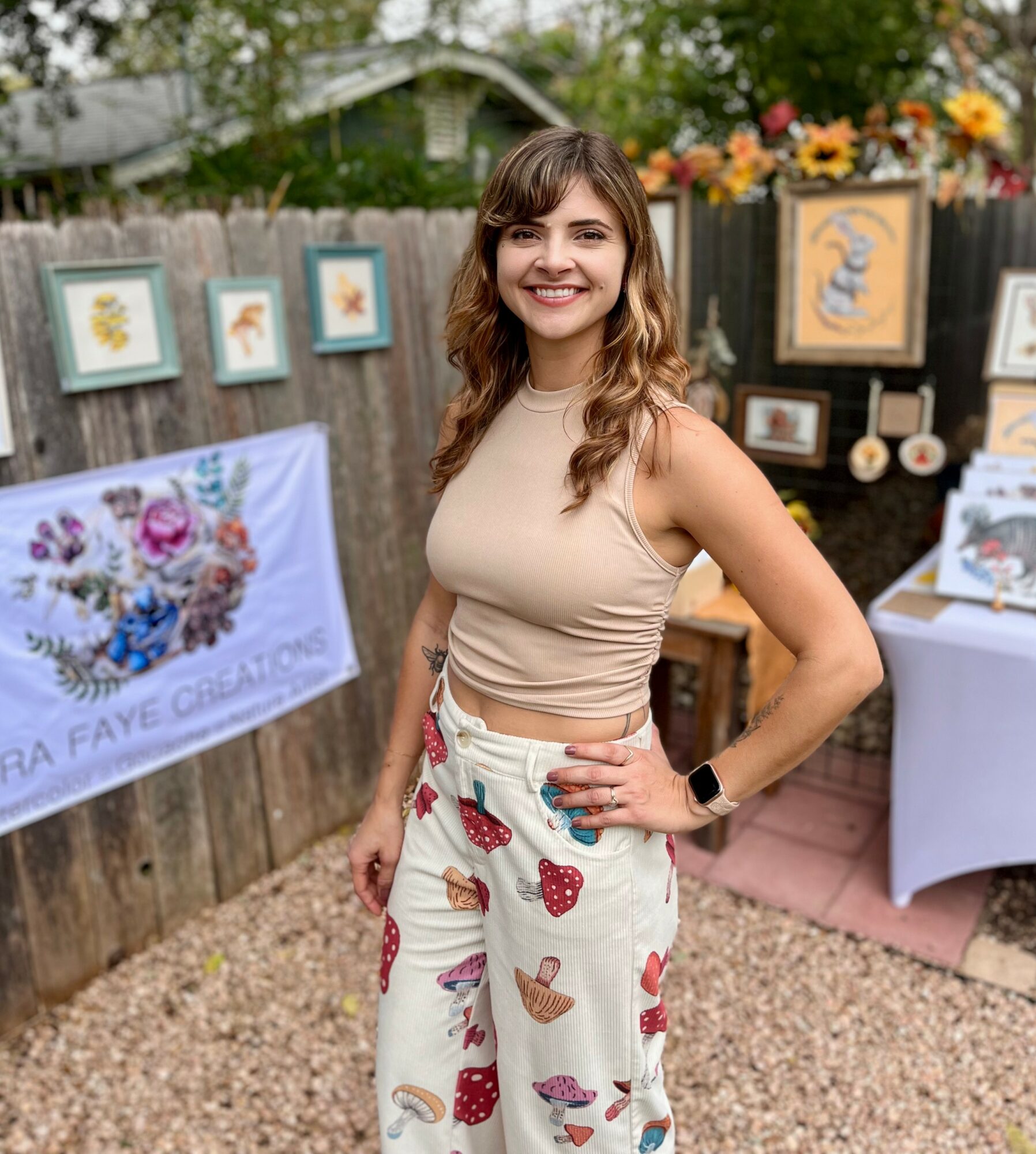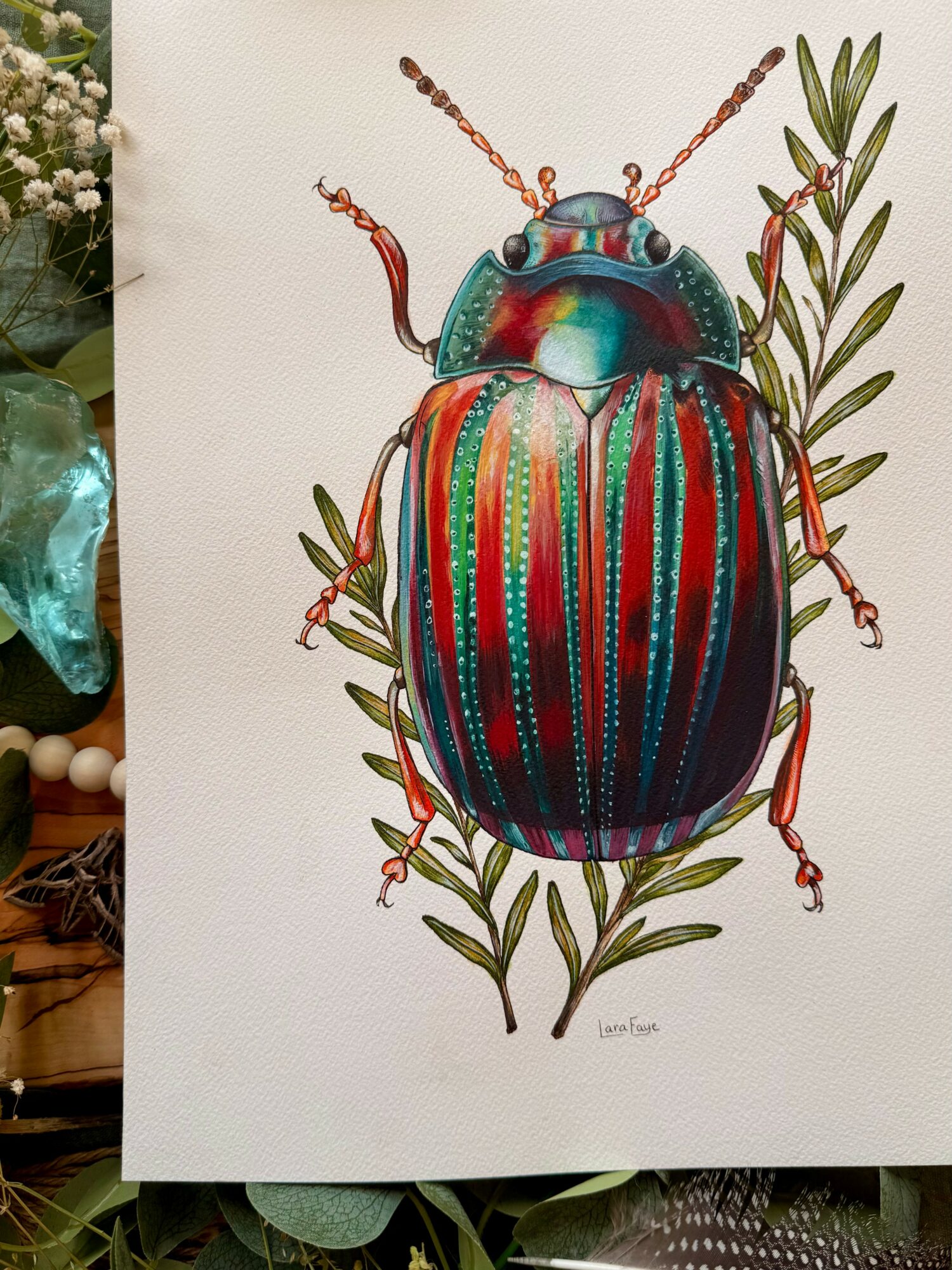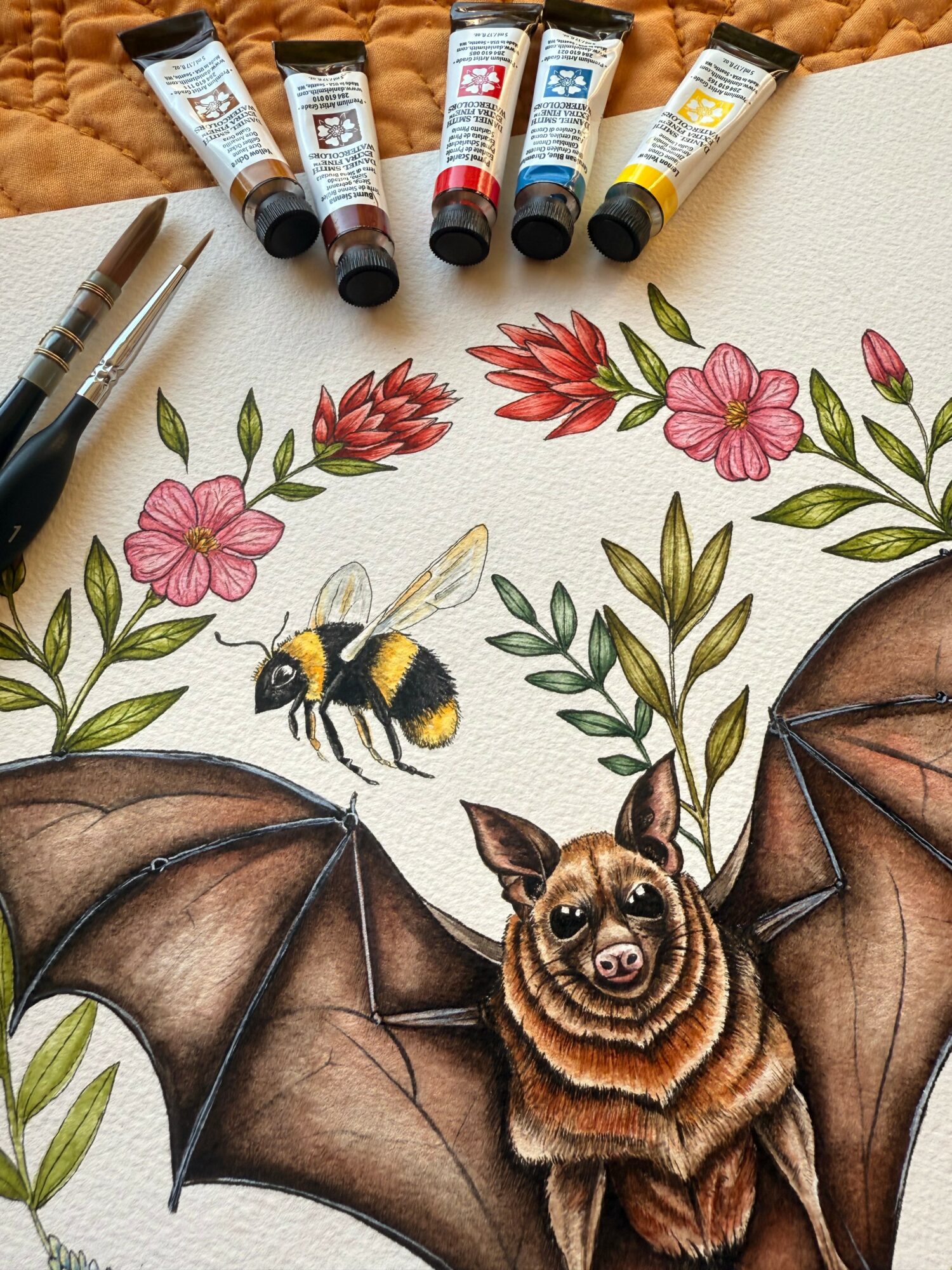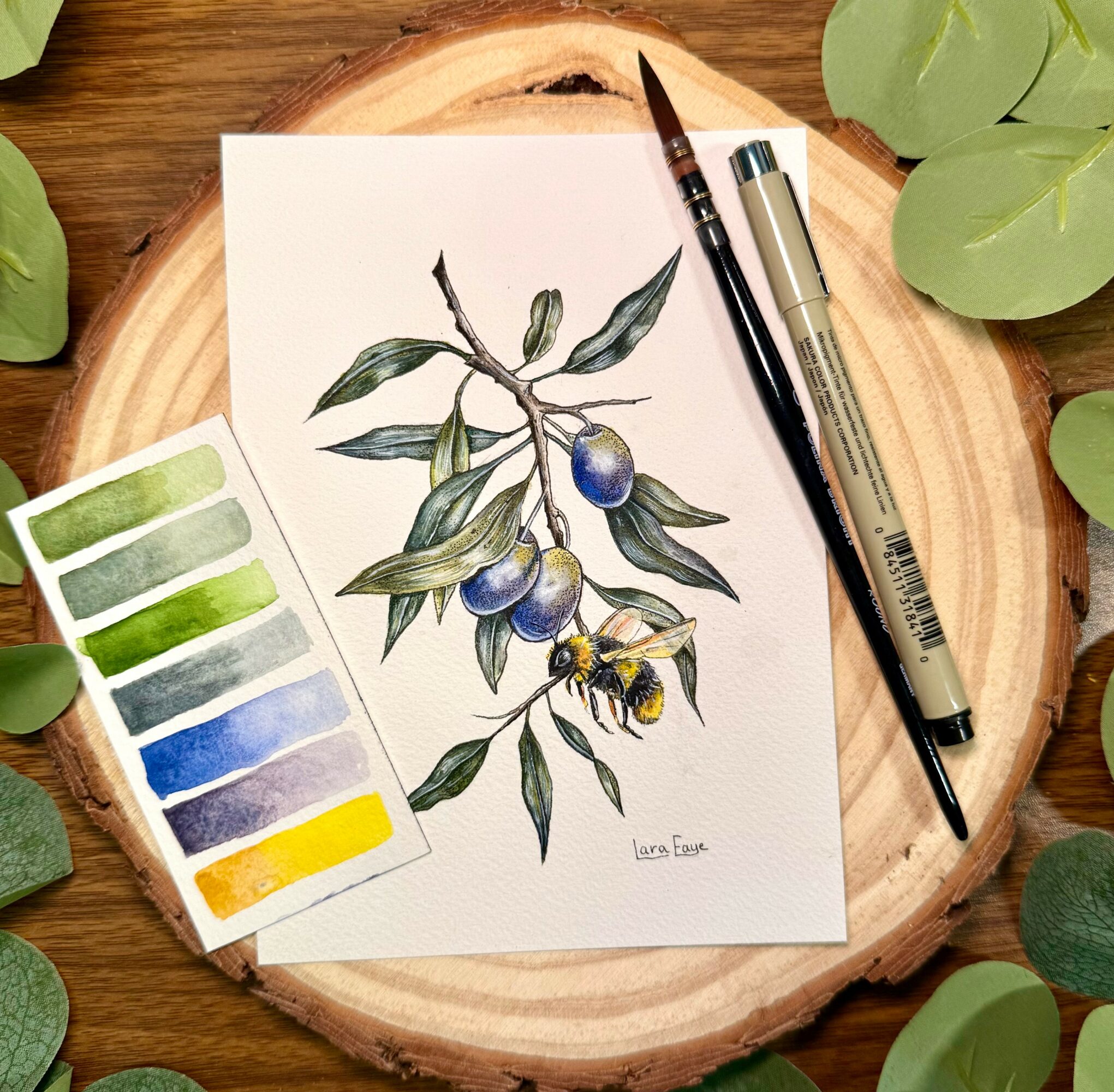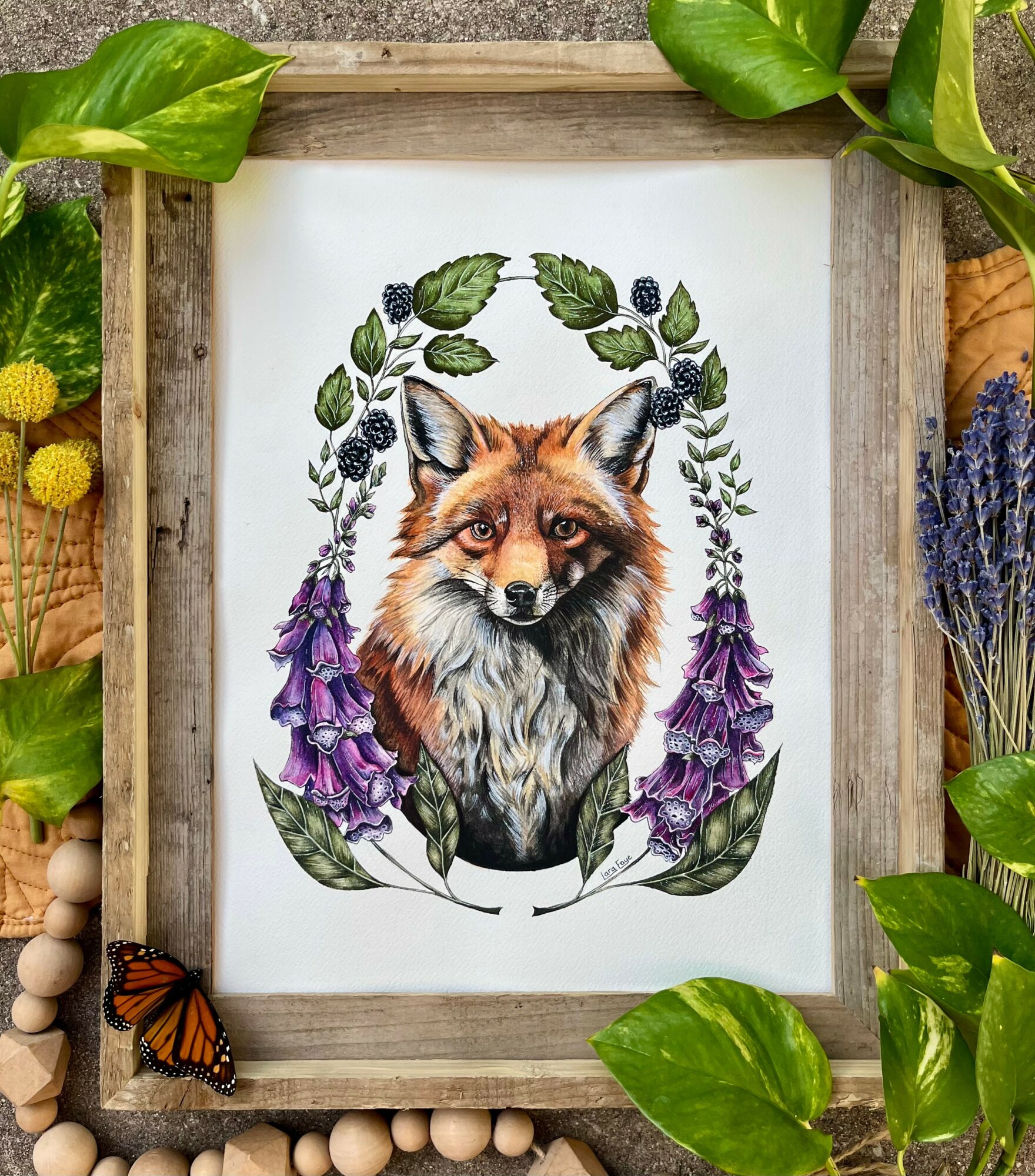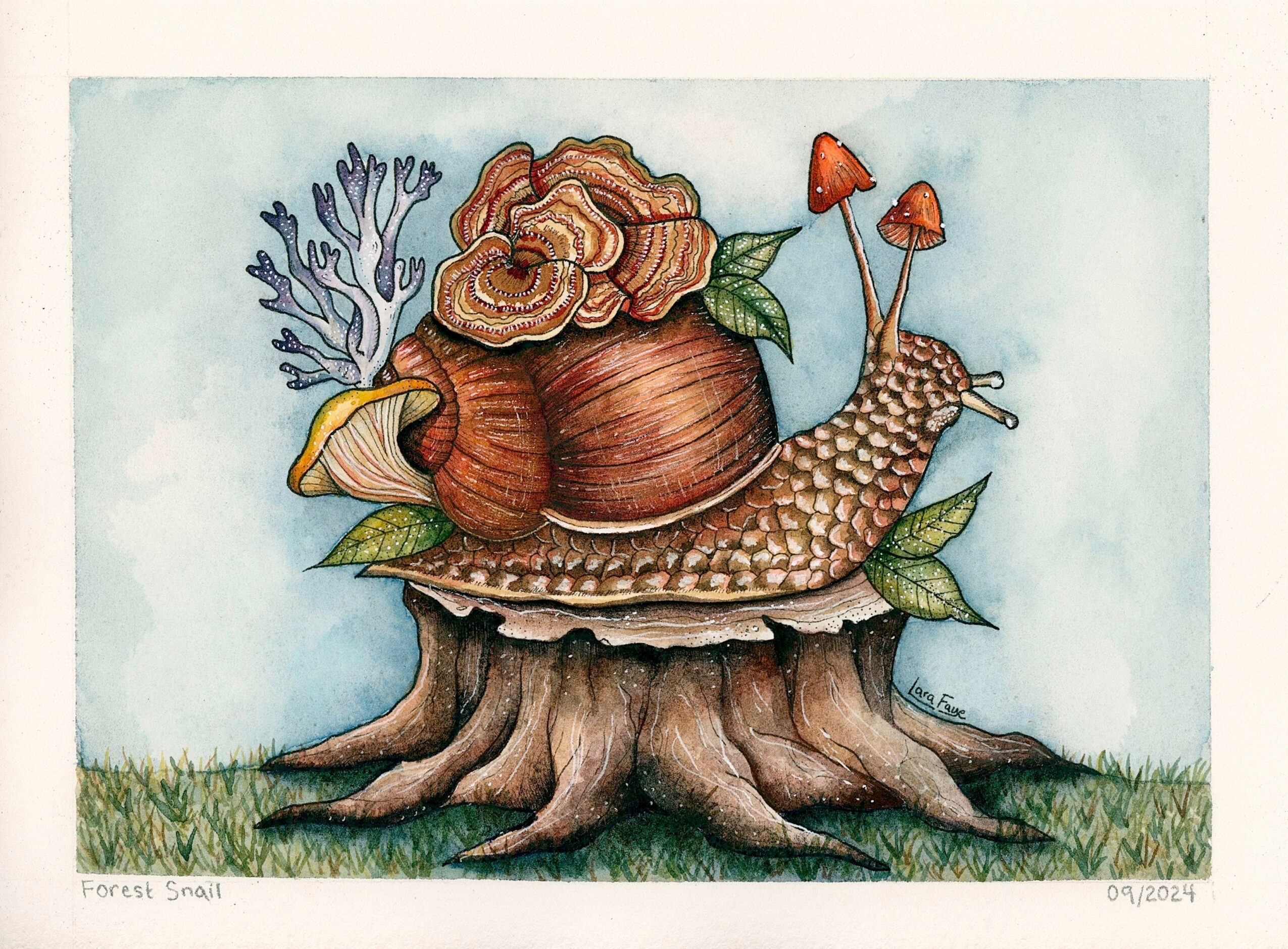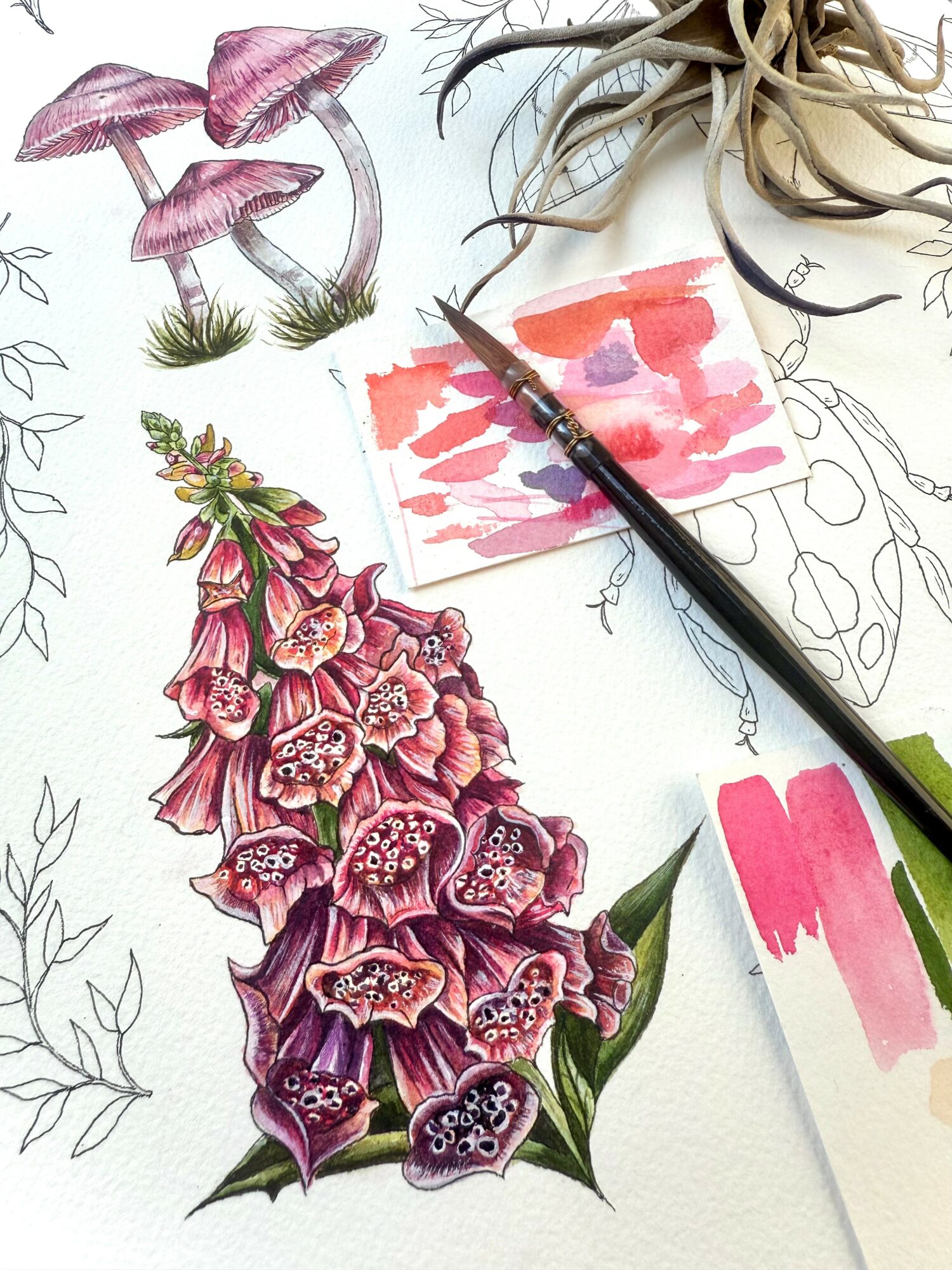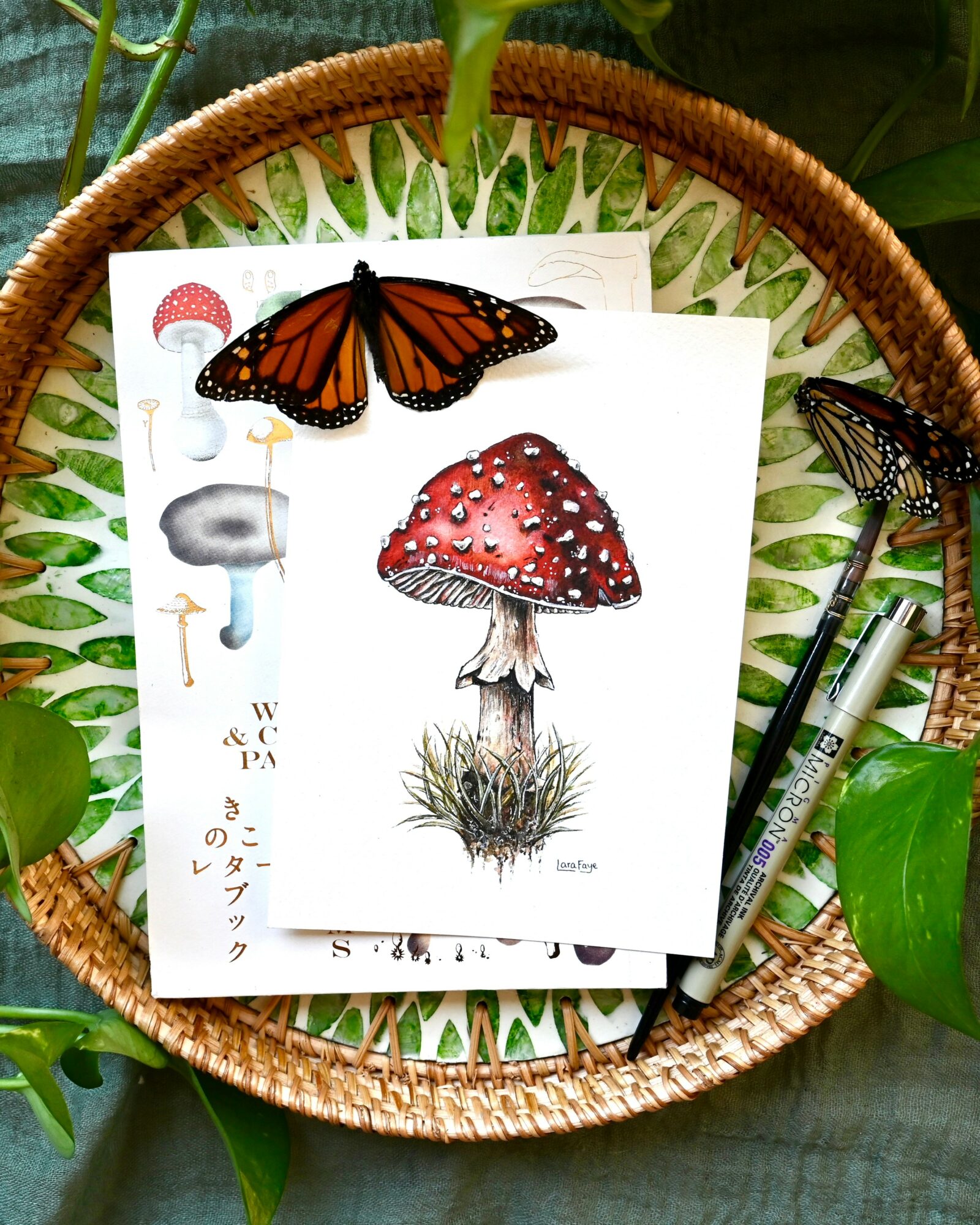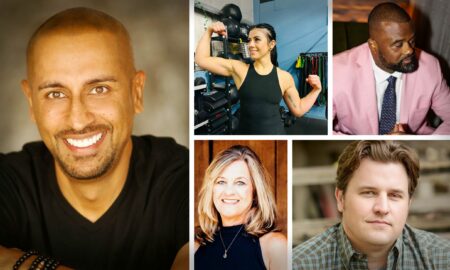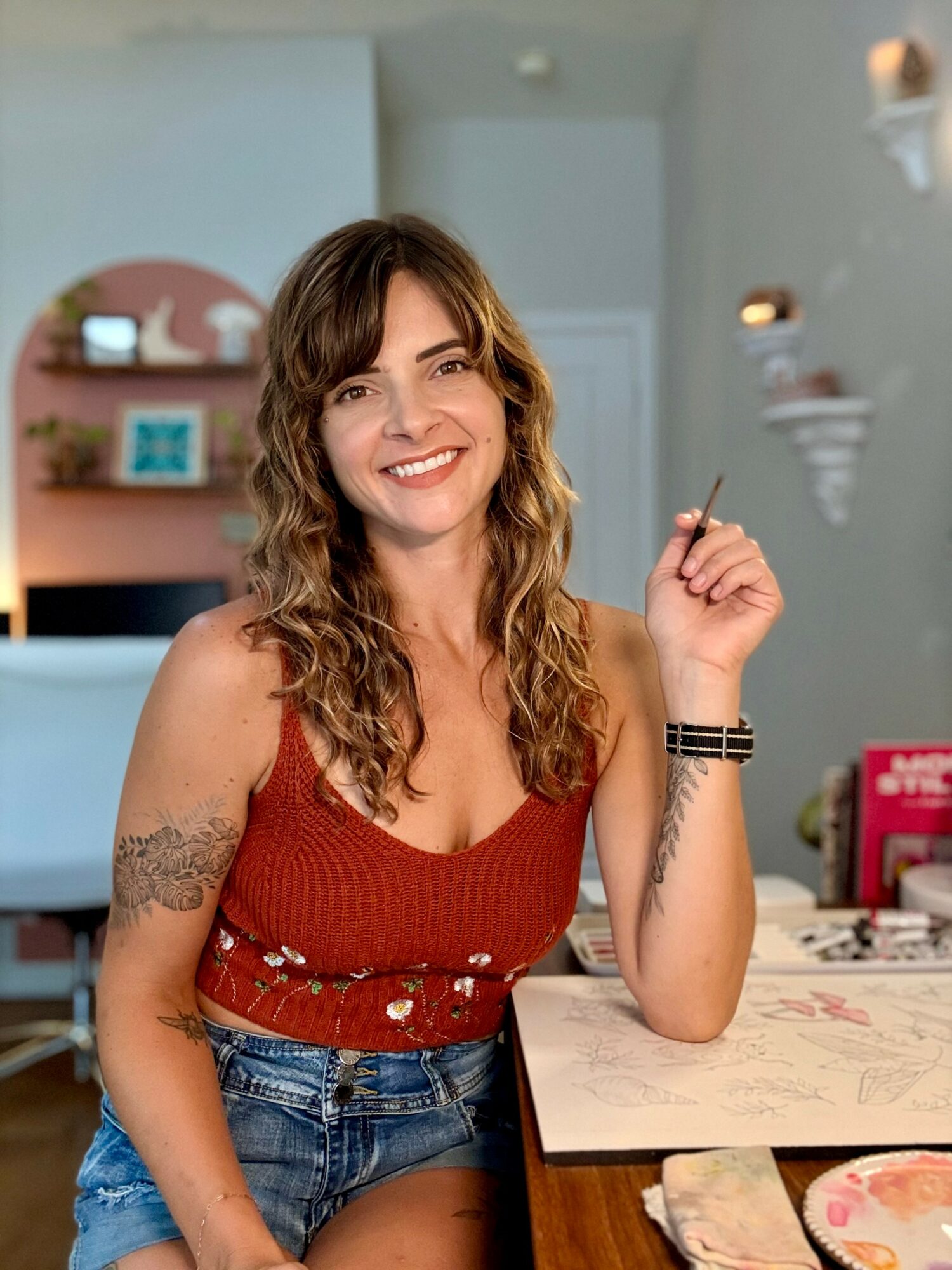

We recently had the chance to connect with Lara Popkess and have shared our conversation below.
Lara, we’re thrilled to have you with us today. Before we jump into your intro and the heart of the interview, let’s start with a bit of an ice breaker: What makes you lose track of time—and find yourself again?
Losing track of time feels like a rare luxury these days, especially when every appliance in your house insists on reminding you what time it is. As cliché as it sounds coming from an artist, painting and drawing are the few things that truly let me disconnect from all that digital noise. When I’m creating, I’m not thinking about notifications or to-do lists. I focused on the rhythm of my brush, the way colors mix and shift, the texture taking shape beneath my hand. In those moments, I get to lose myself completely, and somehow, that’s exactly where I find myself again.
Can you briefly introduce yourself and share what makes you or your brand unique?
I’m Lara Popkess, a self-taught artist based a little outside of Austin, Texas. I primarily create watercolor and gouache paintings using vibrant colors, botanical motifs, and bits of Texas wildlife to explore the beauty that exists in both life and death. I also like to dabble in painting on ethically sourced animal bones. My work is rooted in the idea of honoring what has been around since the dawn of time, transforming remnants of nature into something bright, symbolic, and alive again.
Each piece feels like a collaboration with the natural world, and I love that my art invites people to slow down, look closer, and find meaning in small details that are often overlooked. Right now, I’m continuing to grow my collection of bone paintings and explore ways to tie in my love of mycology and local ecology into future projects.
Great, so let’s dive into your journey a bit more. What breaks the bonds between people—and what restores them?
I think what breaks the bonds between people is often misunderstanding. When we stop seeing each other with curiosity and start seeing each other through assumptions. Distance, pride, and fear can all creep in quietly, particularly through online disagreements, and make connection feel harder than it should be. But I think what restores those bonds is the willingness to listen, to admit when we’ve been wrong, and to see the humanity in one another again.
For me, spending time in nature has taught me a lot about that. In ecosystems, everything depends on balance and cooperation; even decay has purpose. People are the same way. Connection takes time, care, and a willingness to grow through the messiness together.
When did you stop hiding your pain and start using it as power?
I think it happened gradually, not all at once. For most of my life, I thought strength meant hiding the parts of myself that felt “too much”, masking to fit in, softening my edges, or trying to quiet my emotions so I wouldn’t take up too much space. But over time, and especially through my art, I began to realize that the very things I tried to hide were also my greatest sources of power.
The pain of masking, of not realizing my true self sooner, runs deep, but it’s given me a perspective that’s uniquely my own. My sensitivity and intense empathy can be painful at times because I feel everything so vividly. But that same empathy allows me to see the world through kind eyes; to notice small, tender details, and reflect that softness and understanding in my work.
Painting has become a way to transform that pain into something meaningful. To show that feeling deeply, even when it hurts, can create something beautiful and connective.
So a lot of these questions go deep, but if you are open to it, we’ve got a few more questions that we’d love to get your take on. Is the public version of you the real you?
That’s a question I’ve spent a lot of time thinking about lately. For as long as I can remember, the public version of me has been more of a performance; a carefully balanced version built around what I thought people wanted to see. For as long as I can remember, I tirelessly kept the “real” me tucked away out of fear of not being accepted for being too weird, too sensitive, or simply too much.
In the months following a recent realization, I’ve been working to merge those two versions of myself. The person I share online, at art markets, and through my paintings is the closest I’ve ever been to my authentic self, but I’m still very much a work in progress. My art has become a mirror for that process. Each piece reflects the layers of emotion, empathy, and curiosity that I once tried to hide. Through painting, I’m able to translate my inner world into color, texture, and symbol because it’s where my truest voice lives.
My empathy and sensitivity to my external surroundings can still feel heavy at times, but they’re also what allow me to connect deeply with others and with the natural world. So while the public version of me is steadily becoming the real me, I know I still have a long way to go — learning, unlearning, and finding comfort in finally being seen.
Thank you so much for all of your openness so far. Maybe we can close with a future oriented question. When do you feel most at peace?
I feel most at peace when I’m creating or surrounded by the quiet hum of the natural world. There’s something incredibly grounding about painting —mixing colors, layering textures, and letting intuition take over. Time softens in those moments. It’s just me, the materials, and the slow rhythm of bringing something to life.
I also find a deep calm and peace when I’m around animals. They move through the world without pretense or judgment — they just are. That presence reminds me to breathe, to slow down, and to simply exist without overthinking every little thing.
And nature, of course, is the thread that ties it all together! Whether it’s sitting beneath a tree, watching bees on my walks, or collecting bones and flowers to paint later — those are the moments that refill me. It’s where I feel most connected, both to myself and to something much larger.
Contact Info:
- Website: www.larafayecreations.etsy.com
- Instagram: https://www.instagram.com/larafaye_creations
- Facebook: https://www.facebook.com/larafayecreations
